#The New Tale of Zatoichi
Text
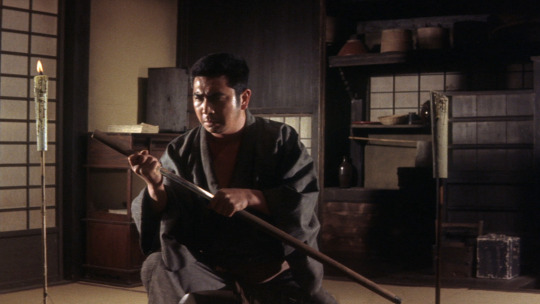
The New Tale of Zatoichi (1963)
Shintaro Katsu is back as Zatoichi in the third installment - and first in color! - of the 26-film series.
Zatoichi returns to his old village, and meets up with his master, Banno, the man who taught him the way of the sword. He also becomes reacquainted with the master's sister, Yayoi.
The revenge-seeking brother of a yakuza boss Ichi killed in the previous film also arrives in the village, intent on slaying Ichi. This complicates things immensely for our favorite anma, as Ichi and Yayoi are in love and plan to marry. Ichi has sworn off swordplay and violence in an effort to prove himself worthy of Yayoi's love.
Then things really get sticky when Banno finds out Ichi's and Yayoi's plans for marriage. To say he disapproves of the match would be putting it mildly.
A great entry in the series, especially as it builds on Ichi's backstory. It's a good idea - although by no means necessary - to watch this one, along with the fourth film, Zatoichi the Fugitive (1963), in order after the first two films to get a better understanding of Ichi.
#The New Tale of Zatoichi#Zatoichi#Shintaro Katsu#yakuza#anma#blind swordsman#jidaigeki#chambara#samurai
11 notes
·
View notes
Text
A very happy birthday in the afterlife to Shintaro Katsu!
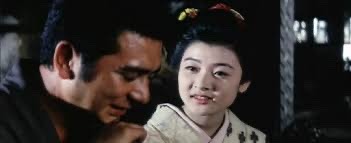
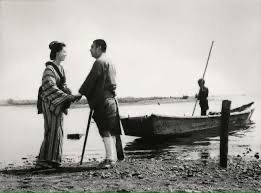
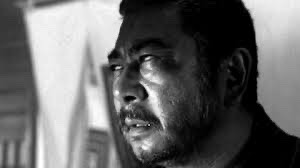
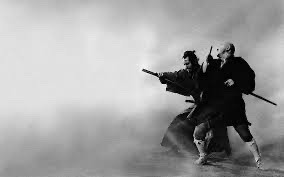

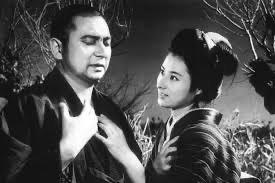




#shintaro katsu#zatoichi#the hoodlum soldier#actor#singer#filmmaker#the tale of zatoichi#the new tale of zatoichi#zatoichi meets Yojimbo#Hanzo the razor: sword of Justice#hanzo the razor: who’s got the gold#samurai vendetta#zatoichi at large#japanese cinema#an actors revenge
52 notes
·
View notes
Text




New Tale of Zatoichi, Tokuzō Tanaka, 1963.
0 notes
Text
New Tale of Zatoichi on Letterboxd
0 notes
Text
Novo Conto de Zatoichi (1963), dir. Tokuzô Tanaka.

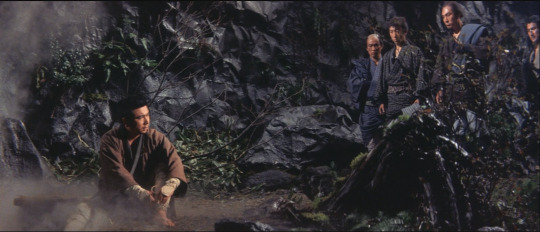


Review originalmente postada: 20/Fev/2023 no Letterboxd.
Neste terceiro longa da franquia, o primeiro filme em cores da franquia, volta com um ritmo parecido com o primeiro filme, dando mais tempo de tela para explorar o drama da vida do protagonista e menos ação, ao contrário do que vimos no segundo.
Aqui vamos ver o anseio por uma vida normal por Zatoichi, cansado da violência, inveja uma vida de trabalho humilde, com uma esposa em casa. Nada de uma vida de Yakuza, jogatina ou luta de espadas. Isso foi sondado nos primeiros filmes, mas aqui, o filme todo se envolve neste drama.
A questão da moralidade do Zatoichi é posto para pauta. Por isso, somos apresentados a mais personagens do passado do Zatoichi, quando o mesmo decidiu que precisava treinar para sua sobrevivência. Seu sensei, se mostra alguém não confiável. Seu inimigo, se mostra honrado. Diversas dúvidas para o mesmo.
Não sei se a mudança para um filme colorido, as cenas de ação ficaram menos interessantes na exploração da cegueira do Zatoichi. Sem dúvidas, dos três primeiros, é o filme com as cenas de ação mais fracas.
No entanto, isso não tira o mérito do filme, as melhores cenas são a exploração da perdição da vida do Zatoichi, o seu drama parece nunca acabar, sempre perdendo um amor ou um amigo. Aqui vemos o mais perto de desistir de tudo por esse personagem.
#新・座頭市物語#new tale of zatoichi#1960s#tokuzo tanaka#japanese movies#japanese cinema#samurai cinema#movies#japan movies#movie#cinema#japan cinema
0 notes
Text
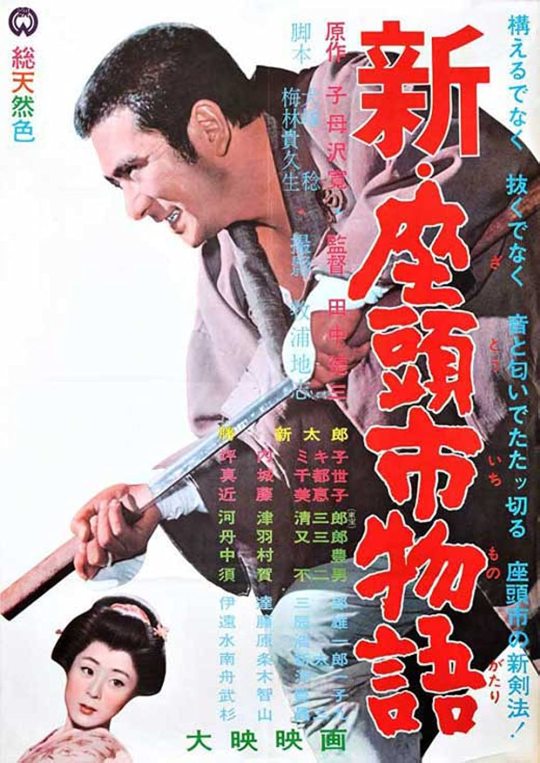
New Tale of Zatoichi (1963)
dir. Tokuzō Tanaka
1 note
·
View note
Text
Takeshi Kitano returns to Cannes, 'indifferent' to success

TOKYO
Takeshi Kitano makes his comeback at Cannes next week with a new samurai epic, but the cult Japanese filmmaker told AFP that he strives to remain "indifferent" to success.
Kitano, who rose to fame as a comedian before winning acclaim as an arthouse director, said in an exclusive interview that he does things his own way.
"If I receive recognition abroad, I'm happy, but I want to be as indifferent to that as possible," he said in Tokyo before departing for the French film festival. "I'd be very happy if something I'd shot... received good reviews. But that doesn't mean I will try to please."
"Kubi" is the first feature-length release in six years from the 76-year-old, whose eclectic career has included spells as an actor, author, painter and host of the gameshow "Takeshi's Castle".
Although his latest period piece has a bigger budget than the gritty gangster flicks he became known for, originality remains crucial for Kitano.
Despite being a huge fan of Japanese cinematic master Akira Kurosawa, when making "Kubi", he avoided watching the combat scenes in the director's 20th-century classics like "Seven Samurai" or "Ran".
"I hate being influenced," Kitano said. "I tried not to watch the battle scenes in Kurosawa's films, so I wouldn't be influenced by them. If they are similar, we probably had the same ideas."
"Kubi" tells the tale of the 1582 death of Japan's most powerful feudal lord in a deadly trap at a temple in Kyoto, in what became known as the Honno-ji Incident.
The film is not in competition at Cannes, but will premiere at the festival on Tuesday.

It is Kitano's first Cannes appearance since 2010, when the yakuza movie "Outrage" went before the Palme d'Or jury.
But lounging on a sofa in his dressing room at Japanese network TV Asahi, having just recorded the political show he has presented for decades, the director played down his return to the big screen.
"I've been trying to quit TV and movies for a long time," he said, adding he was trying to take it easy, playing golf at his holiday home.
But even without the pressure to produce more work, Kitano found himself back on set. "I thought I would make this film my last one," he said.
"But then, after we finished filming, the actors and crew said it was a good movie," he said, describing their appreciation as "the most important thing".
Having studied engineering and "space-related subjects" at university, entertainment was Kitano's second choice of career -- something that allows him to feel "relaxed" even now.
For decades he was one of Japan's most popular TV presenters, known as "Beat Takeshi", performing sketches dressed as anything from a sumo wrestler to a giant milk carton.
In contrast, his movies are full of tortured characters and dark humor, such as the underworld thrillers "Sonatine", "Brother" and "Hanabi", which took top prize at the 1997 Venice Film Festival.
Kitano's biggest commercial success, 2003's "Zatoichi", was also a samurai film, and "Kubi" is his most expensive film yet, having cost 1.5 billion yen to make.
"Most Japanese films are small-scale productions with small budgets... I thought I'd try to do something on a larger scale," Kitano said.
In fact, he had wanted a budget and crew "three times bigger", he said, and computer graphics were used to upscale the battle scenes.
Kitano first wrote a synopsis for "Kubi" three decades ago, but the project only took off after he wrote a novel in 2019 about the key moment in Japan's history.
It contains the themes of loyalty, betrayal and Japanese codes of honor often seen in Kitano films, and also includes close same-sex bonds.
"Japanese historical drama rarely depicts male homosexuality," although "it was common in that era", Kitano said.
So "I wanted to make a film that would never be done on TV" or in mainstream Japanese cinema.
The final product is more somber, intimate -- and violent -- than the usual sugar-coated primetime samurai dramas.
And even with two future film projects potentially on the cards, Kitano says what people think will remain a low priority.
"I'm just doing what I like and what I think is good."
0 notes
Text
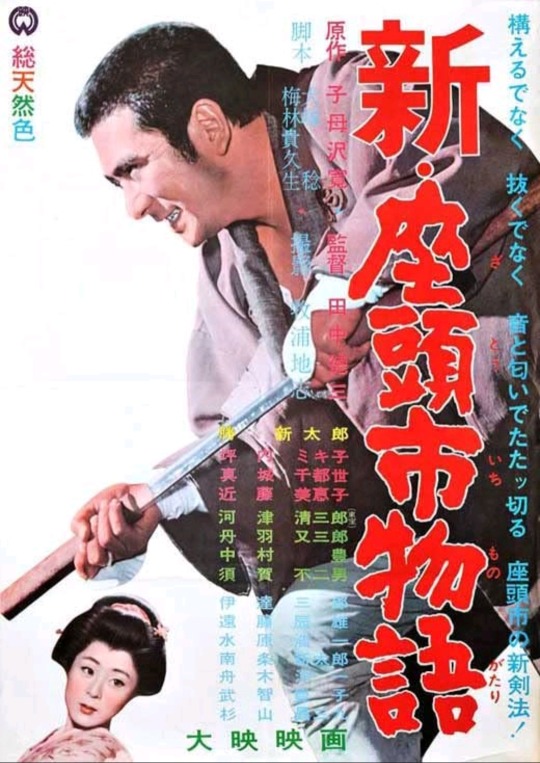
Shin Zatôichi Monogatari
(Novo Conto de Zatoichi)
JP, 1963
Tokuzô Tanaka
6/10
.
Zatôichi Colorido
Pela primeira vez filmado a cores, sem a bela cinematografia a preto e branco do primeiro filme , e com um amor Impossível no centro da trama, que assim ganha um inesperado toque romântico, aínda que fatalista, este novo conto de Zatoichi fica aquém do primeiro.
Compreendo a vontade de não repetir fórmulas mas o caminho seguido retirou carisma a este Zatôichi e aproximou-o da banalidade.
Não posso não deixar de referir que a cinematografia deixa um pouco a desejar, sobretudo se comparada com a do primeiro episódio.
O herói perdeu o carisma e desceu ao mercado do audiovisual.
.
Colored Zatôichi
Filmed in color for the first time, without the beautiful black and white cinematography of the first film, and with an Impossible love at the center of the plot, which thus gains an unexpected romantic, yet fatalistic touch, this new tale by Zatoichi falls short of the first.
I understand the desire not to repeat formulas, but the path followed removed this Zatôichi's charisma and brought him closer to banality.
I cannot fail to mention that the cinematography leaves a little to be desired, especially when compared to the first episode.
The hero lost his charisma and went down to the audiovisual market.
0 notes
Photo

Tokuzo Tanaka, The New Tale of Zatoichi (1963)
#1963#Minoru Inuzuka#Tokuzō Tanaka#Kan Shimozawa#the new tale of zatoichi#Chishi Makiura#Shintaro Katsu#Shin Zatōichi monogatari#Daiei Film#daiei#yakuza
2 notes
·
View notes
Photo

New Tale of Zatoichi
42 notes
·
View notes
Text
New Tale of Zatoichi (1963)
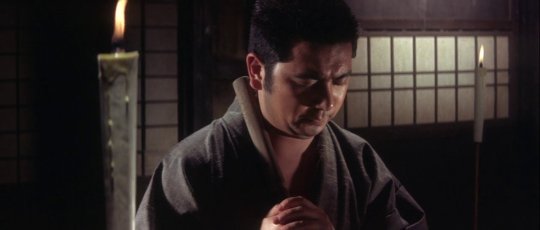
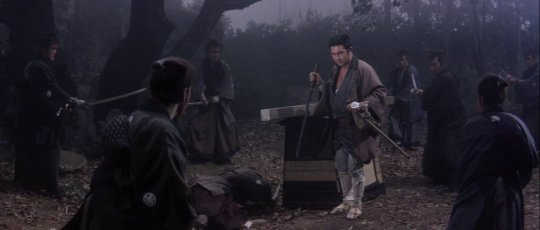
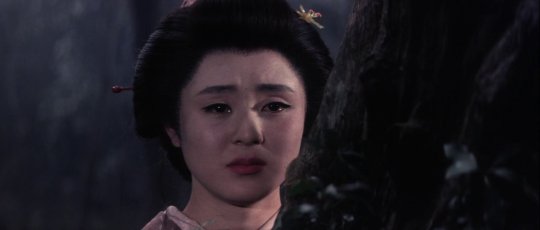

新・座頭市物語 New Tale of Zatoichi (1963)
directed by Tokuzo Tanaka
#新・座頭市物語#new tale of zatoichi#1960s#tokuzo tanaka#japanese movies#japanese cinema#samurai cinema#stills
2 notes
·
View notes
Text

The Tale of Zatoichi Continues (Zoku Zatoichi Monogatari) 1962.
The direct sequel to The Tale of Zatoichi, released exactly six months later. It is the second - and last - black-and-white film in the series.
A year has passed since the events of the first film, and Zatoichi is on a pilgrimage to pay respects at the grave of his friend, Hirate. Along the way Zatoichi encounters a one-armed ronin, Yoshiro, who harbors a fierce hatred for our blind masseur. It is later revealed that Yoshiro is Zatoichi's older brother, and that Ichi cut off his arm when the two dueled over a woman whom they both loved.
In an inspired bit of casting, Zatoichi actor Shintaro Katu's real-life older brother, Tomisaburo Wakayama, was cast as Yoshiro. He had quite an extensive acting career himself, usually cast as the heavy, and is considered by many to be a better swordsman than his brother.
This film presents the first time that Zatoichi single-handedly battles a large group of enemies (at least 40 men) at one time. The large-scale battle set-piece would become a staple of the series, with the last 10-15 minutes of every film depicting Ichi mowing down his opponents.
At 72 minutes, this is the shortest entry in the series, a full 23 minutes less than its predecessor. It is also much more quickly paced than the first film, which makes The Tale of Zatoichi Continues is over just minutes after you plant your seat in a chair.
Ichi would return to the big screen in five months with The New Tale of Zatoichi, the first color film in the series.
#The Tale of Zatoichi Continues#Zatoichi#Shintaro Katsu#Tomisaburo Wakayama#anma#chambara#jidaigeki#yakuza#ronin
11 notes
·
View notes
Photo
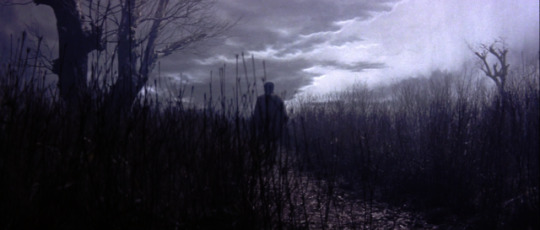
New Tale of Zatoichi (1963)
#cinema#film#new tale of zatoichi#shin zatoichi monogatari#shintaru katsu#tokuzo tanaka#chikashi makiura#japanese#action#adventure#drama
6 notes
·
View notes
Text

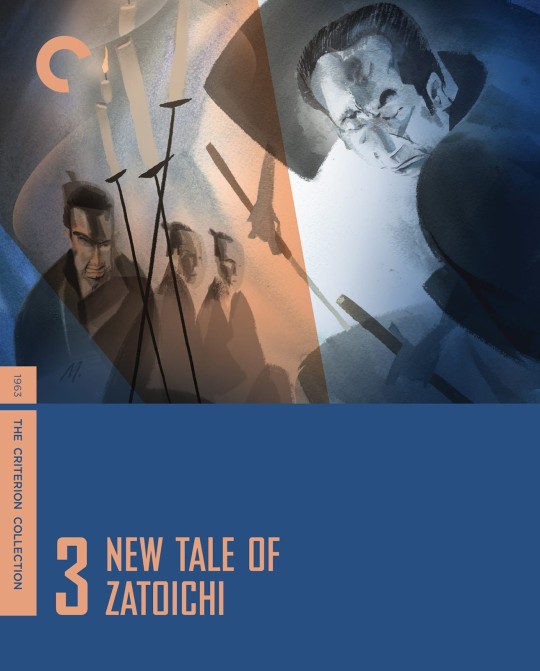
WATCHED
Jeez. I got a little choked up in this movie. I'm a sappy bastard.
#new tale of Zatoichi#new tale of Zatoichi (1963)#shintarô katsu#shintaro katsu#samurai#japanese cinema#Chitose Maki#新・座頭市物語#Mikiko Tsubouchi#Seizaburō Kawazu#Fujio Suga#Tatsuo Endō#Mieko Kondo#Shin Zatoichi monogatari#WATCHING#jidaigeki
1 note
·
View note
Text
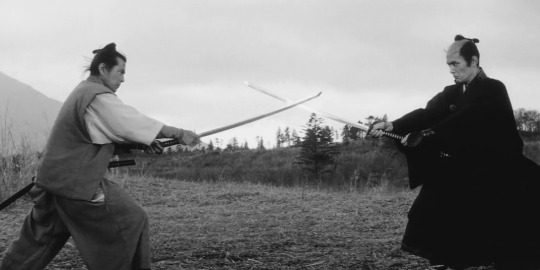

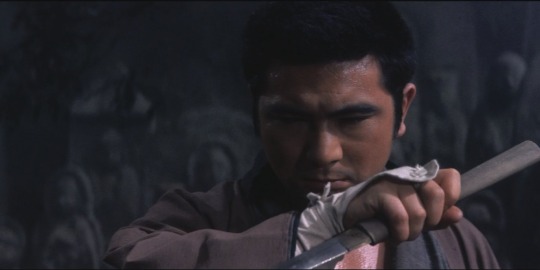
Weekly Wrap Up
Samurai Rebellion / The Lure / New Tale of Zatoichi / Lastfm
Last.fm / Letterboxd
0 notes
Photo
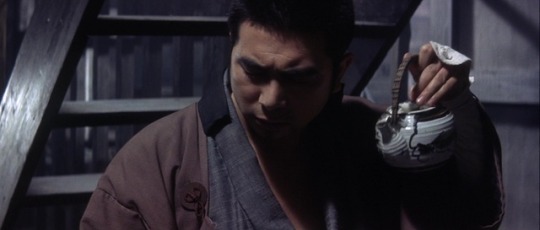
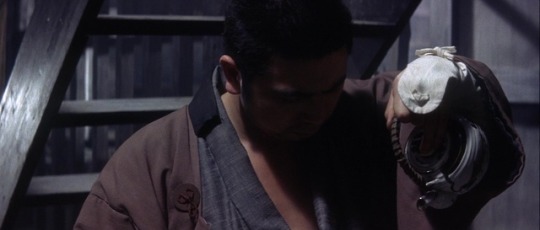
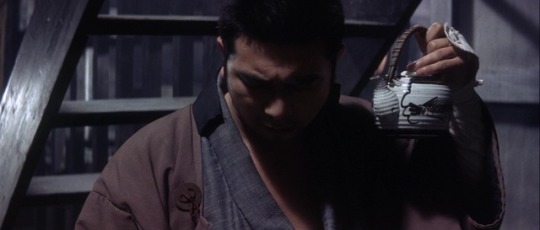

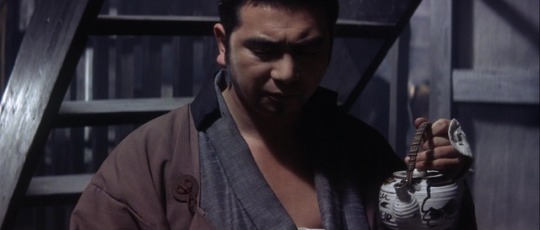
New Tale of Zatoichi | Tokuzô Tanaka | 1963
Shintarô Katsu
Wot, no tea?
54 notes
·
View notes